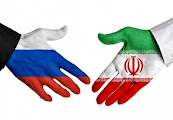Two fundamental pillars of the German economy have been
rocked over the past years: Cheap energy prices and easy access to large export
markets. In 2019, the country’s electricity prices were among the lowest in the
EU, but in 2023 German electricity prices had more than doubled due to Russia’s
invasion of Ukraine.
This reversal of fortunes shook the key industrial sector,
which is expect to shrink further for the fourth straight year in 2025.
Meanwhile, China’s rising share in markets formerly dominated by German
firms—such as automobiles—and a likely increase in trade barriers to both the
Chinese and US markets threaten external demand. Together, China and the US
absorb around 16% of German exports.
Deteriorating infrastructure, lagging digitalization
efforts, the government’s collapse… the list of the economy’s domestic woes
goes on, but the culprit, it turns out, is the same: The federal debt brake.
This measure caps the state’s net borrowing at 0.35% of GDP annually to contain
the public-debt-to-GDP ratio.
Though, successful in its primary aim—Germany has the lowest
such ratio among G7 countries—it has had the unfortunate side effect of
limiting public investment at a time when it’s desperately needed.
Add to that excessive red tape constraining private
investment, and the result is crumbling international competitiveness;
according to a report by the Institute for Management Development, Germany has
dropped nine places to 24th in the global competitiveness rankings in the past
two years. Reforms to the debt brake require a two-thirds majority in
Parliament, and are opposed by the two front-runners for the February
elections. As a result, such reforms are likely a pipedream.
Though Covid-19 was successfully contained in 2021,
households were plagued for a prolonged period afterwards by weak consumer
sentiment, declining real wages and elevated interest rates. Heading into 2025,
real income growth should pick up, which together with further rate cuts
by the ECB will support consumer spending. Still, spending growth will be
below the Euro average amid rising unemployment and persistent consumer
negativity—in part due to lingering political uncertainty.
The Consensus is currently for the economy to post a shallow
rebound in 2025 as lower interest rates and inflation drive
improvements in private spending and fixed investment, and stronger EU demand
fuels a recovery in exports. Still, Germany will again claim the title of the
G7’s worst performer this year, held down by protracted malaise in the key
industrial sector.
According to ING’s Carsten Brzeski, “The country is
still one of the richest economies in the world, but it needs an overhaul to
stop its gradual deterioration. Just addressing the main issues will be a
challenge. Add to this unfavourable demographics and the impact on healthcare
and pension systems and it’s clear that there is no easy way out of the current
situation. In the absence of any new policy initiatives after the elections,
the German economy looks set for another year of stagnation and possibly even a
third consecutive contraction. A sad new record.”
Friedrich Schaper and Sven Jari Stehn, analysts at Goldman
Sachs, said, “The early elections therefore provide an opportunity to tackle
Germany’s many economic challenges. While some additional fiscal support seems
likely, we believe any fiscal expansion is going to be limited in size, focus
mostly on investment and support growth meaningfully only from 2026. Decisive
structural reforms could boost Germany’s growth prospects—as they did in the
early 2000s—but likewise take time to implement, leaving a weak growth outlook
for 2025.”
Courtesy:
Focuseconomics



